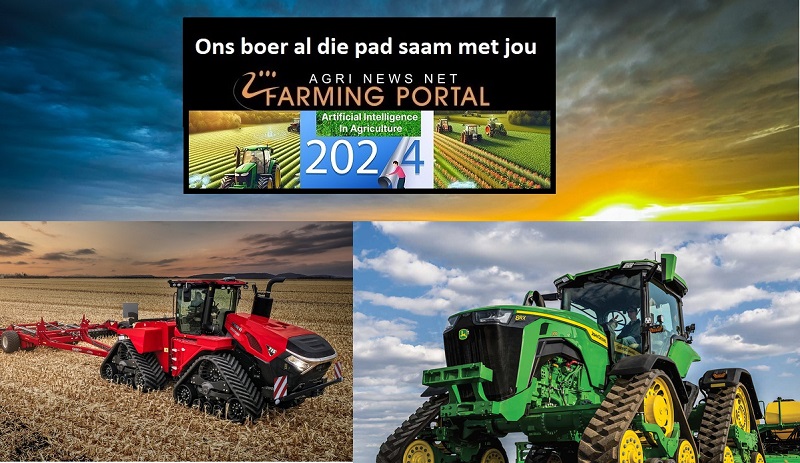Globally, powerful solutions are emerging by blending Indigenous farming practices with modern agricultural innovations. Practices rooted in generations of local, context-specific knowledge gain even greater value when combined with advancements in methods, technology, and science.
This integration tackles global challenges like population growth and environmental degradation while paving the way for stronger climate resilience and improved food security in an increasingly uncertain future.
The triple COPs of biodiversity, climate change and desertification— collectively known as the Rio Conventions— held across Colombia, Azerbaijan, and Saudi Arabia in late 2024, championed the merger of traditional knowledge with modern solutions. The Indigenous Troika, an initiative launched at COP29, called for greater inclusion of Indigenous voices in climate negotiations, recognizing their unparalleled ability to protect carbon-rich ecosystems.
In December, a groundbreaking United Nations report spotlighted the critical role of Indigenous peoples and local communities in protecting ecosystems, underscoring that deep-rooted traditional knowledge and values are not just important, but essential for creating effective solutions to the climate crisis.
“What makes traditional knowledge so valuable is that it is typically holistic and rooted in a deeper understanding of the natural relationships and connections of nature, people, animals, plants and energy forces,” says Esther Penunia, head of the Asian Farmers Association.
Technology can build on these approaches, providing tools that improve efficiency, precision, and scalability. By complementing time-tested methods with science-backed innovations, farmers can address current challenges while preserving the integrity of ancestral knowledge.
Cherrie Atilano grew up on a sugarcane farm on Negros Island in the Philippines, where the harsh realities of farming were a part of the fabric of daily life. She remembers the tiempos muertos, or "time of suffering"— six long months between planting and harvest when fields sat idle, leaving families hungry and drowning in debt.
By signing up, you agree to our Terms of Service, and you acknowledge our Privacy Statement. Forbes is protected by reCAPTCHA, and the Google Privacy Policy and Terms of Service apply.
“Sugarcane farming— it was not sweet at all,” she sighs.
Her single mother— a maliit na magsasaka, or smallholder farmer— did her best to keep the family afloat. This struggle planted a seed in Cherrie: a desire to rewrite the narrative for local agriculturalists. That resolve crystallized when she stumbled across a locally authored book that revealed a profound truth: "Farmers already know the land. They listen to nature. We just need to add structure, economics, and science to validate their practices."
Today, Atilano’s organization, AGREA Agricultural Systems, is bringing this ideology to life. On Marinduque Island, a once isolated volcanic island where AGREA piloted its first farm school, farmers are paving the way for their counterparts across the Philippines, providing them with a model to optimize their yields and build thriving food systems.
 In defence of food retailers in the private sector
In defence of food retailers in the private sector
“Zero hunger has always been one of our goals in everything that we do,” Atilano explains. “That's why we focus first on household farming solutions and after that, we plan for better livelihoods.”
Atilano launched her business on a simple premise— farmers are the experts. As the daughter of a farming family, she understood the value of ancestral knowledge and recognized it as the foundation on which she could build.
“I lived with farmer families— people who had farmed all their lives, often without land titles or the ability to read and write,” she recalls. “Despite their lack of formal education, I saw them as my teachers. As a trained agriculturist and economist, I wanted to bridge science and subsistence farming, where survival is day-to-day, with no long-term planning.”
From these exchanges, Atilano developed simple, sustainable solutions— modernized improvements— tailored to the land, that incorporated methods already being used by farmers.
Today, she instructs farmers about the innovative use of local resources to enhance soil fertility and support sustainable farming. Farm waste such as chicken manure, weeds, and other scraps are transformed into nutrient-rich organic fertilizers. Fish entrails, readily available from nearby markets, are fermented to create amino acids, while seaweed, which washes ashore during the monsoon season, is repurposed into natural fertilizers.
These sustainable practices are helping to improve adaptation and resilience, grow yields and enhance livelihoods, while preserving the agricultural heritage of Indigenous communities.
In regions where climate extremes threaten food production, the fusion of tradition and technology have played a significant role in boosting resilience.
In Bangladesh, where smallholder farmers contend with climate challenges like rising water levels, soil salinity, and flooding, the East-West Seed Knowledge Transfer Foundation— the brainchild of World Food Prize winner, Simon Groot— complements traditional methods by providing farmers with climate resilient inputs and education in sustainable practices.
Like AGREA, the East-West Seed Knowledge Transfer Foundation honors the Indigenous wisdom of farmers.
“Farmers teach us. We're teaching them too, but there's a lot of exchange of ideas,” shares Hoa Duong Piyaka, Head of Partnerships. “With climate change, smallholder farmers are being asked to do more with far fewer resources. Our work is focused on equipping them with the tools and knowledge they need to adapt and thrive.”
By building on farmers’ deep-rooted knowledge, East-West Seed has helped boost vegetable yields by as much as 60%, turning adversity into opportunity. Farmers are now growing crops that withstand climate extremes while improving food security for their families and communities.
“Farmers who start adopting improved technologies, their yield goes up, their income goes up,” says Executive Director, Stuart Morris. “But it’s not just income. Imagine the additional volume of vegetables produced by those farmers. That’s enough to supply millions more low-income consumers with safe-to-eat, healthy vegetables.”
Conversely, Indigenous farmers’ deep-rooted local knowledge has enabled them to apply and improve upon modern methodologies introduced by the Foundation.
Duong Piyaka describes a case in which Indigenous pumpkin farmers who had been trained in trellising techniques improvised on those methods to adapt to floods, thus making pumpkin production more climate resilient.
“It was remarkable because we hadn’t specifically instructed them to trellis pumpkins,” she explains. “They did it out of necessity, adapting to the extreme flooding that affects the region. Pumpkins left on the ground would become waterlogged, moldy, and inedible. But instead, pumpkins were suspended from trellises like lanterns. It was a brilliant adaptation to a harsh environment.”
Indigenous pumpkin farmers in Bangladesh who had been trained in trellising techniques by East West ... [+]
The knowledge transferred by the East-West Seed Knowledge Transfer Foundation is designed to be simple, adaptable, and scalable.
“When we talk about ‘technology,’ it’s not about drones or high-tech systems— it’s about meeting farmers where they are and delivering practical training that creates meaningful impact,” says Duong Piyaka.
Bespoke scientific advances also have an important role to play in complementing traditional techniques.
Ajinomoto’s Agro2Agri’s tailored plant-based bio-stimulants— rich in amino acids and bioactive compounds— boost crop productivity and significantly reduce the need for fertilizers, resulting in fewer carbon emissions, and enable plants to use water more efficiently.
Field trials have demonstrated remarkable results: an 8% increase in rice yields with just half the typical fertilizer and a 24% reduction in the carbon footprint of spinach.
In Uganda, Ajinomoto collaborates with The Kafunjo Community Project, a grassroots initiative supporting 400 children, many of whom are orphans, providing them with bio-stimulants and remote technical support. The project integrates Indigenous farming practices like crop rotation and intercropping (e.g., maize with beans) to maintain soil health and maximize land use. Ajinomoto’s bio-stimulants bolster the Indigenous techniques used by farmers employed by the project, improving yields, enhancing food self-sufficiency, reducing chemical inputs in the drought-prone area and protecting nearby rivers used for irrigation.
This helps to boost food security, create clean and healthy environments, and generate income opportunities through crop surpluses. “By increasing yields and preserving soil quality, our solutions not only provide nutritious foods but also contribute to achieving Sustainable Development Goals 1, 2, 4, and 8,” says Shigeyuki Takeuchi, Associate General Manager at Ajinomoto.
Ajinomoto has supported Kafunjo Community Project, a Green School and 1-acre farm, based in Uganda, ... [+]
To support smallholder farmers, who often can’t afford large industrial containers of bio-stimulants, Ajinomoto also offers smaller packages tailored to their needs.
This innovation has far-reaching environmental benefits. “Improvements in yield per hectare reduce the need for arable land, preventing deforestation in many regions,” says Sustainability Manager, Francisco José Hernández Gimeno.
Through the synergy of cutting-edge science and time-tested Indigenous practices, Ajinomoto is helping farmers build resilience, protect ecosystems, and ensure a more sustainable and food-secure future.
Thousands of miles away, in Madagascar, a nation celebrated for its biodiversity— yet vulnerable to climate change— agriculture sustains over 80% of the population. Amid these challenges, Sahanala empowers nearly 16,000 smallholder farmers by combining innovation with Indigenous practices to promote sustainability and improve market access.
The organization skillfully integrates traditional methods like ady gasy pest control— an Indigenous Malagasy technique— with modern tools such as mechanized plowing. This unique blend of heritage and technology not only preserves biodiversity but also drives sustainable economic development.
“Indigenous groups are the guardians of local customs and traditions,” says Serge Rahaobelina, President of Sahanala. “Establishing a sustainable mechanism to empower producers involves improving traceability, strengthening technical support and financial education systems, and promoting compliance.”
Sahanala’s approach demonstrates the power of merging the old with the new. Farmers receive training to enhance production while adopting innovative tools that complement their ancestral practices. These efforts are supported by guaranteed market access, health and education initiatives, and resource conservation in protected areas, creating a comprehensive framework for sustainable growth.
“A sustainable economy relies on communities within the value chain,” Rahaobelina highlights. This philosophy drives Sahanala’s mission to achieve zero hunger through improved farmer livelihoods, enhanced production, and robust social security systems. By recognizing the connection between good nutrition and productivity, Sahanala supports farmers during lean seasons by subsidizing rice to ensure food security.
Through innovation and tradition, Sahanala diversifies income sources and strengthens resilience, creating a model that eradicates hunger while nurturing sustainable farming communities.
The farmers in Madagascar's Melaky region received donations of machinery from Sahanala to help to ... [+]
Sahanala
From the patubak system in the Philippines, where sweet potatoes suppress weeds and boost yields, to Bangladesh’s ingenious baira floating gardens that thrive in flood-prone areas, to Madagascar’s ady gasy crop disease remedies and Uganda’s ebugga soil-nutrition-boosting crop rotations, time-tested methods reflect the resilience and ingenuity of traditional communities.
A new generation of agricultural solutions— rooted in Indigenous wisdom and enhanced by science— is helping to solve some of the world’s most pressing agricultural challenges, delivering benefits to both farmers and businesses working with them.
For businesses, collaborating with local farmers and communities while respecting their time-honored traditions, offers significant economic advantages beyond moral imperatives. By supporting sustainable practices, organizations secure stable supply chains, enhance product quality, and reduce production risks tied to environmental degradation. Investing in local farming communities also fosters innovation, as traditional knowledge is often a source of cost-effective, climate-resilient solutions. Capitalizing on these synergies also improves brand reputation and meets growing consumer demand for ethically sourced products, creating shared value for businesses and farmers alike.
United under the Zero Hunger Pledge, initiatives like AGREA, Sahanala, the East West Seed Foundation and Ajinomoto are committing to help feed the world while also making it more sustainable.
“Farmers are profoundly connected to the land,” Atilano reflects. “They instinctively know when the trees and winds are ‘angry.’ Their understanding of nature is extraordinary. By respecting their wisdom and enhancing it with science and economics, we create systems where they can thrive sustainably.”
The path forward is clear. To achieve zero hunger and build a more equitable world, we must first listen to those who have always known the land best. Through the harmonious blending of ancient and modern wisdom, we can cultivate a future where no one goes hungry.















